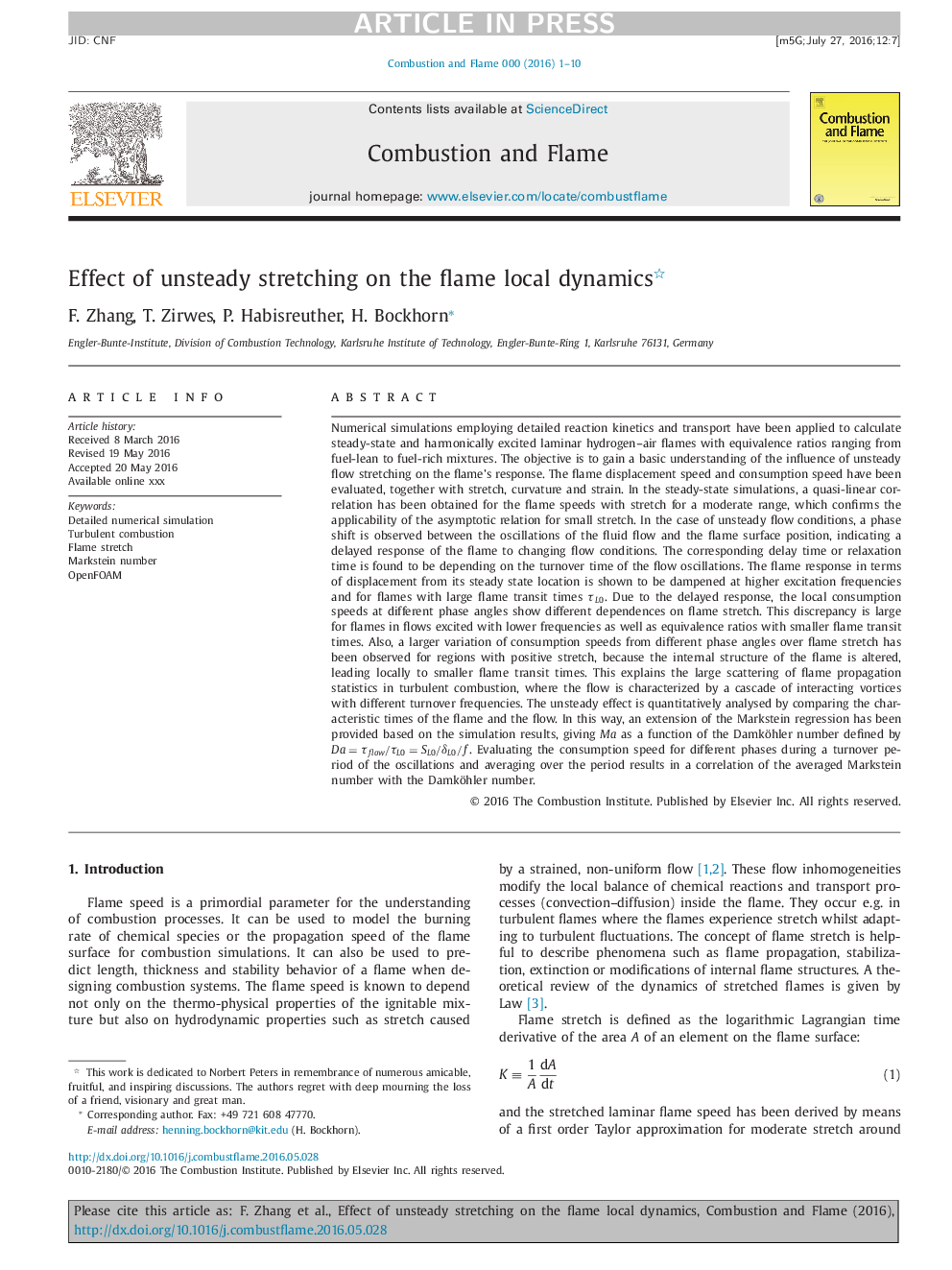| کد مقاله | کد نشریه | سال انتشار | مقاله انگلیسی | نسخه تمام متن |
|---|---|---|---|---|
| 4764530 | 1423562 | 2017 | 10 صفحه PDF | دانلود رایگان |
عنوان انگلیسی مقاله ISI
Effect of unsteady stretching on the flame local dynamics
ترجمه فارسی عنوان
اثر کشش نامنظم بر دینامیک محلی شعله
دانلود مقاله + سفارش ترجمه
دانلود مقاله ISI انگلیسی
رایگان برای ایرانیان
کلمات کلیدی
موضوعات مرتبط
مهندسی و علوم پایه
مهندسی شیمی
مهندسی شیمی (عمومی)
چکیده انگلیسی
Numerical simulations employing detailed reaction kinetics and transport have been applied to calculate steady-state and harmonically excited laminar hydrogen-air flames with equivalence ratios ranging from fuel-lean to fuel-rich mixtures. The objective is to gain a basic understanding of the influence of unsteady flow stretching on the flame's response. The flame displacement speed and consumption speed have been evaluated, together with stretch, curvature and strain. In the steady-state simulations, a quasi-linear correlation has been obtained for the flame speeds with stretch for a moderate range, which confirms the applicability of the asymptotic relation for small stretch. In the case of unsteady flow conditions, a phase shift is observed between the oscillations of the fluid flow and the flame surface position, indicating a delayed response of the flame to changing flow conditions. The corresponding delay time or relaxation time is found to be depending on the turnover time of the flow oscillations. The flame response in terms of displacement from its steady state location is shown to be dampened at higher excitation frequencies and for flames with large flame transit times ÏL0. Due to the delayed response, the local consumption speeds at different phase angles show different dependences on flame stretch. This discrepancy is large for flames in flows excited with lower frequencies as well as equivalence ratios with smaller flame transit times. Also, a larger variation of consumption speeds from different phase angles over flame stretch has been observed for regions with positive stretch, because the internal structure of the flame is altered, leading locally to smaller flame transit times. This explains the large scattering of flame propagation statistics in turbulent combustion, where the flow is characterized by a cascade of interacting vortices with different turnover frequencies. The unsteady effect is quantitatively analysed by comparing the characteristic times of the flame and the flow. In this way, an extension of the Markstein regression has been provided based on the simulation results, giving Ma as a function of the Damköhler number defined by Da=Ïflow/ÏL0=SL0/δL0/f. Evaluating the consumption speed for different phases during a turnover period of the oscillations and averaging over the period results in a correlation of the averaged Markstein number with the Damköhler number.
ناشر
Database: Elsevier - ScienceDirect (ساینس دایرکت)
Journal: Combustion and Flame - Volume 175, January 2017, Pages 170-179
Journal: Combustion and Flame - Volume 175, January 2017, Pages 170-179
نویسندگان
F. Zhang, T. Zirwes, P. Habisreuther, H. Bockhorn,
